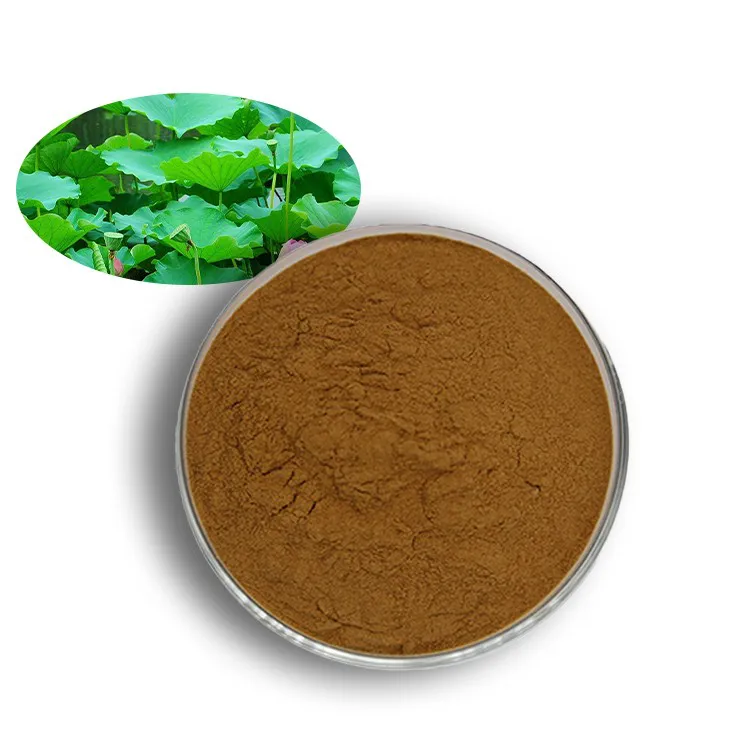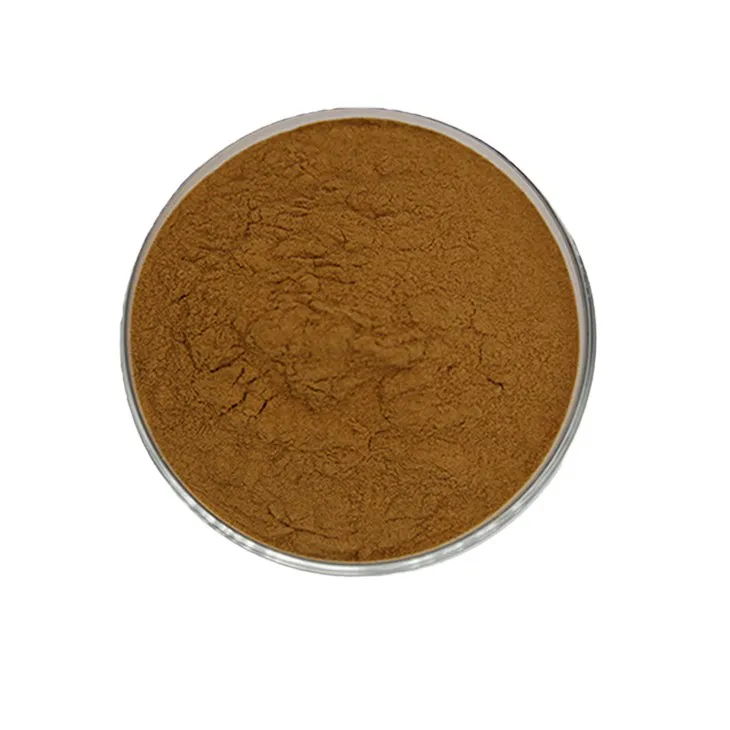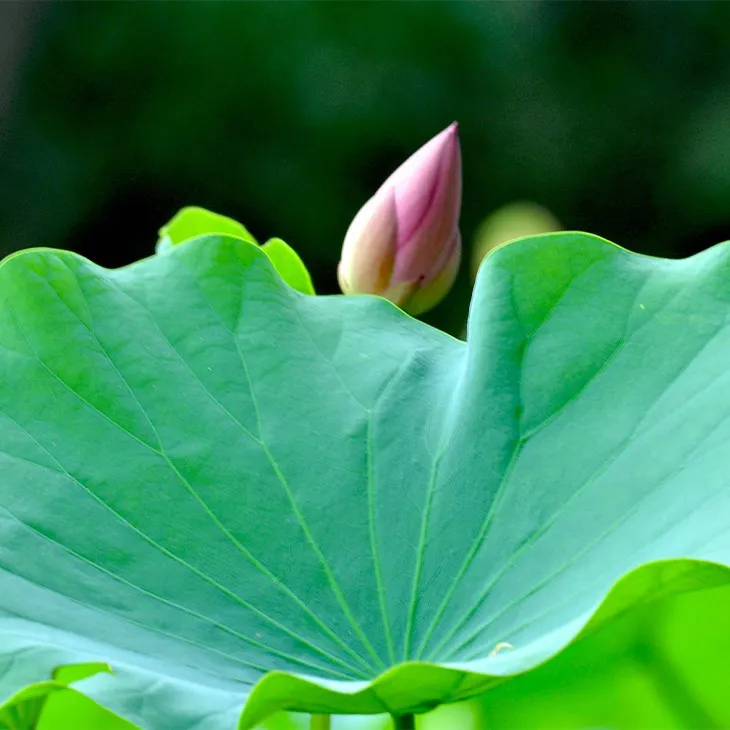- 0086-571-85302990
- sales@greenskybio.com
Lotus Leaf Extract: Uses, Advantages and Manufacturing Processes
2024-11-13

1. Introduction
The lotus plant has long been revered in various cultures for its beauty and symbolic significance. However, in recent years, the focus has shifted towards the potential of its leaves in different industries. Lotus leaf extract has emerged as a valuable substance with a wide array of applications. This extract is obtained from the leaves of the lotus plant (Nelumbo nucifera), which is native to Asia and Australia. The unique properties of the Lotus leaf extract make it a sought - after ingredient in fields such as medicine, cosmetics, and food.

2. Uses of Lotus leaf extract
2.1 Medical Applications
2.1.1 Anti - obesity Effects
- Obesity has become a global epidemic, and researchers are constantly looking for natural remedies. Lotus leaf extract has shown promising potential in combating obesity. It contains bioactive compounds that can interfere with the body's fat absorption mechanisms. For example, some studies suggest that it may inhibit the activity of certain enzymes involved in fat digestion, such as lipase. By doing so, it reduces the amount of dietary fat that is absorbed by the body, which can contribute to weight loss over time.
- Another aspect of its anti - obesity effect is related to its impact on metabolism. The extract may help to increase the body's energy expenditure, which means that the body burns more calories at rest. This could be due to its ability to stimulate the activity of brown adipose tissue, which is responsible for thermogenesis (heat production) in the body.
2.1.2 Lipid - lowering Properties
- High levels of lipids in the blood, such as cholesterol and triglycerides, are associated with an increased risk of cardiovascular diseases. Lotus leaf extract has been investigated for its lipid - lowering effects. It can act on the liver, which is the main organ involved in lipid metabolism. The extract may regulate the synthesis and excretion of lipids in the liver, leading to a reduction in blood lipid levels.
- Some components in the lotus leaf extract may also prevent the oxidation of low - density lipoprotein (LDL) cholesterol. Oxidized LDL is more harmful to the blood vessels as it can promote the formation of atherosclerotic plaques. By inhibiting LDL oxidation, the extract helps to protect the cardiovascular system.
2.1.3 Antioxidant Activity
- The body is constantly exposed to oxidative stress, which is caused by the production of free radicals. These free radicals can damage cells, proteins, and DNA, leading to various diseases and aging. Lotus leaf extract is rich in antioxidants, such as flavonoids and polyphenols. These antioxidants can scavenge free radicals, neutralizing their harmful effects.
- Antioxidants in the lotus leaf extract also play a role in protecting the body's cells from oxidative damage. For instance, they can prevent lipid peroxidation in cell membranes, which is a process that can disrupt the integrity of the membranes and affect cell function.
2.2 Cosmetic Applications
2.2.1 Anti - inflammatory Effects
- Skin inflammation can be caused by various factors, such as environmental pollutants, allergens, and skin diseases. Lotus leaf extract has anti - inflammatory properties that can soothe irritated skin. It can inhibit the production of inflammatory mediators, such as cytokines and prostaglandins, in the skin cells.
- This anti - inflammatory effect makes the lotus leaf extract suitable for use in products for sensitive skin. It can reduce redness, swelling, and itching associated with skin inflammation, providing relief to the skin.
2.2.2 Skin - purifying Properties
- The extract has the ability to purify the skin by removing impurities and excess sebum. It can unclog pores, preventing the formation of blackheads and whiteheads. This is beneficial for those with oily or acne - prone skin.
- Lotus leaf extract also has a mild exfoliating effect, which can help to remove dead skin cells, leaving the skin smoother and more radiant. It can promote cell turnover, which is essential for maintaining healthy - looking skin.
2.3 Food Applications
2.3.1 Natural Preservative
- In the food industry, there is a growing demand for natural preservatives to replace synthetic ones. Lotus leaf extract has antimicrobial properties, which can inhibit the growth of bacteria, yeasts, and molds. This makes it a potential natural preservative for various food products.
- Using lotus leaf extract as a preservative can also meet the consumer preference for "clean label" products, as it is a natural ingredient. It can extend the shelf life of food products without the use of harmful chemicals.

3. Advantages of Lotus Leaf Extract
3.1 Natural Origin
- One of the major advantages of lotus leaf extract is its natural origin. It is derived from the lotus plant, which is a plant - based source. This makes it an attractive option for consumers who prefer natural products over synthetic ones. In an era where consumers are more conscious about the ingredients in the products they use, the naturalness of lotus leaf extract gives it a competitive edge.
3.2 Non - toxic
- Lotus leaf extract has been found to be non - toxic. This is crucial, especially in applications such as food and cosmetics, where safety is of utmost importance. It can be used without the risk of causing harm to human health. Extensive research has been conducted to ensure its safety, and no significant toxic effects have been reported so far.
3.3 Rich in Bioactive Compounds
- The extract is rich in a variety of bioactive compounds, such as flavonoids, polyphenols, alkaloids, and terpenoids. These bioactive compounds are responsible for the various beneficial effects of the lotus leaf extract. For example, flavonoids and polyphenols contribute to its antioxidant and anti - inflammatory properties, while alkaloids may play a role in its anti - obesity and lipid - lowering effects.

4. Manufacturing Processes of Lotus Leaf Extract
4.1 Solvent Extraction
- The most common method for manufacturing lotus leaf extract is solvent extraction. In this process, a suitable solvent is chosen based on the solubility of the target compounds in the lotus leaves. Commonly used solvents include ethanol, methanol, and water.
- First, the lotus leaves are collected and dried. Drying is an important step as it helps to preserve the leaves and makes the extraction process more efficient. The dried leaves are then ground into a fine powder to increase the surface area for extraction.
- The powdered lotus leaves are then mixed with the selected solvent in a suitable ratio. For example, if ethanol is used as the solvent, a typical ratio could be 1:10 (weight/volume) of lotus leaf powder to ethanol. This mixture is then stirred continuously for a certain period, usually several hours, to ensure thorough extraction of the bioactive compounds.
- After the extraction period, the mixture is filtered to separate the liquid extract from the solid residue. The liquid extract contains the dissolved bioactive compounds from the lotus leaves. The solid residue can be discarded or further processed depending on the requirements.
- The liquid extract obtained from the filtration step may still contain impurities and solvents. To purify the extract, techniques such as evaporation and distillation can be used. In evaporation, the solvent is removed under reduced pressure and at a controlled temperature. This concentrates the extract and leaves behind a more purified form of the lotus leaf extract.
4.2 Other Extraction Methods
- Supercritical fluid extraction is another method that can be used for lotus leaf extraction. Supercritical carbon dioxide is often used as the supercritical fluid. This method has the advantage of being more environmentally friendly compared to solvent extraction as it does not leave behind any solvent residues. However, it requires more specialized equipment and higher operating costs.
- Ultrasonic - assisted extraction is also being explored. Ultrasonic waves are applied during the extraction process, which can enhance the mass transfer of the bioactive compounds from the lotus leaves to the solvent. This method can potentially reduce the extraction time and improve the extraction efficiency.

5. Conclusion
Lotus leaf extract has a wide range of uses in medicine, cosmetics, and food. Its anti - obesity, lipid - lowering, antioxidant, anti - inflammatory, and skin - purifying properties, along with its use as a natural preservative, make it a valuable ingredient. The advantages of being natural, non - toxic, and rich in bioactive compounds further enhance its appeal. The manufacturing processes, such as solvent extraction, supercritical fluid extraction, and ultrasonic - assisted extraction, ensure that the valuable bioactive compounds can be isolated from the lotus leaves. With further research and development, lotus leaf extract has the potential to play an even more significant role in various industries in the future.
FAQ:
What are the main uses of lotus leaf extract in medicine?
Lotus leaf extract shows potential in anti - obesity, lipid - lowering, and antioxidant effects in medicine. It may help in the management of body weight by potentially affecting factors related to obesity. The lipid - lowering property can contribute to improving lipid profiles in the body. And its antioxidant effects can combat oxidative stress, which is associated with various diseases.
How does lotus leaf extract benefit cosmetics?
In cosmetics, lotus leaf extract benefits from its anti - inflammatory and skin - purifying properties. The anti - inflammatory property can soothe irritated skin, reducing redness and swelling. The skin - purifying aspect helps in cleansing the skin, removing impurities and potentially preventing acne or other skin blemishes.
Why can lotus leaf extract be used as a natural preservative in food?
Lotus leaf extract contains certain bioactive compounds that have antimicrobial or antioxidant properties. These properties can inhibit the growth of spoilage - causing microorganisms such as bacteria, fungi, etc., and also prevent oxidative rancidity in food, thus acting as a natural preservative.
What are the bioactive compounds present in lotus leaf extract?
Lotus leaf extract is rich in various bioactive compounds. Some of the common ones include flavonoids, alkaloids, and phenolic acids. Flavonoids contribute to its antioxidant and anti - inflammatory properties. Alkaloids may have other physiological effects. Phenolic acids also play a role in antioxidant activities among other functions.
What is the typical solvent used in the solvent extraction process of lotus leaf extract?
Common solvents used in the solvent extraction of lotus leaf extract include ethanol. Ethanol is often preferred because it is relatively safe, can effectively dissolve the bioactive compounds in lotus leaves, and is easy to remove during the subsequent purification steps. However, other solvents or solvent mixtures may also be used depending on the specific requirements of the extraction process.
Related literature
- The Bioactive Compounds and Potential Health Benefits of Lotus Leaf Extract"
- "Lotus Leaf Extract in Cosmetics: Properties and Applications"
- "The Role of Lotus Leaf Extract as a Natural Preservative in the Food Industry"
- ▶ Hesperidin
- ▶ citrus bioflavonoids
- ▶ plant extract
- ▶ lycopene
- ▶ Diosmin
- ▶ Grape seed extract
- ▶ Sea buckthorn Juice Powder
- ▶ Beetroot powder
- ▶ Hops Extract
- ▶ Artichoke Extract
- ▶ Reishi mushroom extract
- ▶ Astaxanthin
- ▶ Green Tea Extract
- ▶ Curcumin Extract
- ▶ Horse Chestnut Extract
- ▶ Other Problems
- ▶ Boswellia Serrata Extract
- ▶ Resveratrol Extract
- ▶ Marigold Extract
- ▶ Grape Leaf Extract
- ▶ blog3
- ▶ blog4
- ▶ blog5
-
Organic Tongkat Ali extract powder factory.
2024-11-13
-
How to make powder with ashwagandha extract.
2024-11-13
-
Rosehip extract manufacturers from China.
2024-11-13
-
The best cat's claw extract in nature.
2024-11-13
-
Chinese Dandelion Leaf Extract Suppliers.
2024-11-13
-
Genistein
2024-11-13
-
Pomegranate Extract
2024-11-13
-
Horse Chestnut Extract
2024-11-13
-
Sugarcane Extract
2024-11-13
-
Avocado Extract Powder
2024-11-13
-
Cat Claw Extract
2024-11-13
-
Curcumin Extract
2024-11-13
-
Acai Berry Extract
2024-11-13
-
Phellodendron Extract
2024-11-13
-
Quercetin
2024-11-13





















